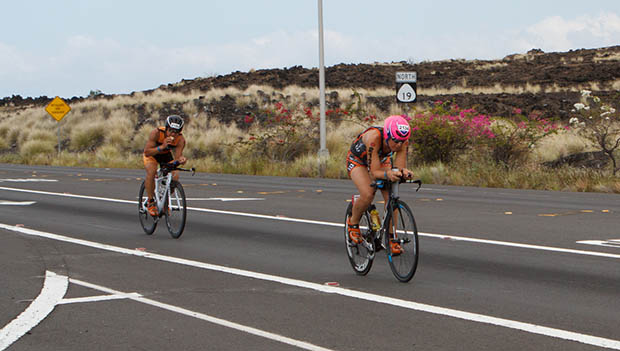
An IRONMAN isn't for the faint of heart. On paper, the distances are considerable—the 2.4-mile swim, 112-mile bike and 26.2-mile run sound impossible when viewed in totality. Surprisingly though, with a little training (and by little we mean a lot) and a smart, detailed approach, these 140.6-mile races are completely doable for anyone willing to put in the work.
Let's say you have a handful of sprint- and Olympic-distance finishes in your palmarès and have maybe even dabbled with a few 70.3s. If like many triathletes you find yourself looking for more, an IRONMAN is the next logical step.
But unlike any previous races you may have completed, there's a lot more to choosing the right IRONMAN than simply window shopping online or signing up for the one down the street. Each race has its own unique characteristics to keep in mind before pressing the "register now" button.
We've gathered nine things for you to consider before registering that'll make your race day experience a little smoother and more enjoyable. It's all about finding the right race for you.
Time of Year
If you're considering an IRONMAN, you no doubt already have a few triathlons under your belt. By now, you should already know what conditions you race the best in. Do you prefer the cooler temperatures of an early- or late-season race or warmer conditions during the peak summer months? Also, be sure to take your training runway into account before you sign up. If you pick an early IRONMAN, you'll be training during the shorter and colder winter months.
Is It Spectator Friendly?
It's one thing to find a race that's optimal for yourself, but it's also crucial to keep your race Sherpas, family and friends in mind. They're the ones who have to navigate closed roads, know where to find you out on the course and stand and cheer for hours on end. Find a race that has multiple loops, as well as great bars and restaurants nearby.
Local vs. Destination Race
There's something to be said for picking a local, nearby race. Not only will you be in the same time zone and not have to travel as far, but you'll also be familiar with the climate and the roads. On the flip side, a destination race is a great way to make a vacation out of your IRONMAN experience. Each has its pros and cons, but be sure to keep cost, time of year and location in mind when deciding.
Elevation Profile
Not all IRONMAN races are created equal. They may all be the same length, but their elevation profiles can differ dramatically. Check the athlete guide before registering to find the starting elevation, as well as total elevation gained throughout the course. A hilly course at a high elevation will naturally be much tougher than a flat race on the coast.
Location
This is similar to our local versus destination race point, but location is something to consider before registering. Is the venue near a big airport? Are there open hotel rooms nearby? Is there nearby entertainment for the family? The course might be great, but if the surrounding area is less than ideal, you'll experience unnecessary stress leading up to the race and have some upset family members on your hands.
Cost
Most IRONMAN-branded races are about the same price, but take note the price will increase the closer you get to the event. Just like having the appropriate training runway, registering for the race as soon as possible will help cut down on the cost. An IRONMAN isn't just the cost of a registration though, you'll need to take things like gear, travel and nutrition into account. And trust us—it adds up quickly.
Race Format
Every IRONMAN course is different. While this is welcomed and a great way to mix up your race schedule, take a close look at the athlete guide before registering. You'll find out details like if the swim has a rolling or mass start, whether the bike and run courses are one big loop or multiple loops or whether T1 and T2 are in different locations. Find a race that aligns with your preferences to maximize your success.
Context of Your Season
Again, it's important to pick an IRONMAN based on the optimal time of the year for you, but it's also key to place the IRONMAN appropriately in your season. If you have other races scheduled, give yourself time to train and recover before toeing the line. Also, don't spread yourself too thin—less is more, especially when it comes to 140.6. It's always better to show up on race day slightly undertrained and fresh than overtrained and burnt out.
Climate
There's a big difference between racing at the IRONMAN World Championship in Kailua-Kona, Hawaii, and IRONMAN Canada. Through your countless training hours you should know if you prefer swimming, cycling and running in the humidity or dry air or in the heat or cold. Also, it's imperative to train in the same climate (or mimic the conditions) as your race, that way you can perform at your best. It's extremely difficult to train all summer in the heat only to fly halfway across the globe and try to perform in a much cooler, foreign environment.
READ THIS NEXT: Everything You Can Expect During Your First IRONMAN



